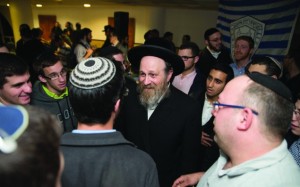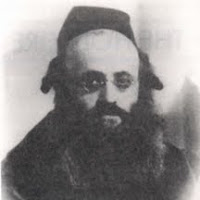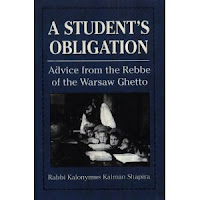Today, the fourth of Cheshvon is the yarzeit of the Rebbe of Piazeczna, Harav Kalonymous Kalman Shapiro, zt”l. Sixty-three years ago he died al Kidush Hashem in Treblinka. Some of you might be familiar with this Carlebach story. Others in the New York area might be familiar with Cong. Aish Kodesh, named in memory the holy rebbe, by Rav Moshe Weinberger.
Just after the Holocaust, a construction worker found in Warsaw found a container buried underneath some rubble. In it contained three manuscripts of his writing, with instructions for them to be sent to Eretz Yisrael with the intent of publication. It is a source of strength for me to know that even in the darkest hours of his life in the Warsaw Ghetto, Harav Harav Kalonymous Kalman Shapiro had the vision and faith that his writings would survive. Over the years, B”H, they have been printed and translated into English (which is how I am familiar with his writing).
One of his lesser know works is the English translation of the journal he kept between the spring of 1928 through the winter of 1939, titled TO HEAL THE SOUL and translated by Yehoshua Starret. I have owned a copy of it since it’s publication in 1995 and often reread it. I have found his journal to be a unique insight into the mind, heart, and life of a true tzaddik.
It’s somewhat, for lack of a better word, strange, to sit and write about someone who was nifter 27 years before I was born. Yet, I feel a loss for a generation of yidden that were taken from us, that I will never know. I can think of nothing more fitting than to post three selections from the Piazeczna’s journal on my own blog, my own digital journal.
LEAVING YOUR MARK ON THE WORLD
He who knows his place.
Be creative and contribute to the world, give it the best you have. Make a niche for yourself that will always be felt in the world.
Are not the “places” of our forefathers, the prophets, and other tzaddikim to this day not known in the world? What a void there would be in the world if, for instance, there had been no Baal Shem Tov?
So “he who knows his place”- who leaves a mark in this world with his life- his “place” will forever be know, even beyond his life. (Page 31)
A “JEWISH” HEART IS NOT ENOUGH
Many people console themselves by saying, “Well, if I am not serving God as I should and am not as refined as behooves me, at least I have good aspirations. Many times my heart cries out in the pain of my distance from him.”
But would the drowning person console himself with his desire to rescue his life and with his heart’s cry facing imminent death? What use is it if he doesn’t act to save himself and try to get out of the water? (Page 51)
SERVING GOD JUST FOR TODAY
It is much easier to devote many years to diligent learning and even to engage in maximum self-denial than it is to devote one day of your life to serve God honestly, sincerely, and properly even according to your own understanding. But who do we think we are and what great service would we do in this one day, “even according to our own understanding,” that such an undertaking seems so overwhelming?
Still, this is no cause for despair or even to be lax. On the contrary: this best service that we can do for today, this is our unique life work. And the effort we put in, together with our yearning for higher, is the aim of our life work. Let us devote these to our Creator. (Page 98)
Also check out:
http://heichalhanegina.blogspot.com/2006/10/piaseczno-rebbe-suggestology.html
http://heichalhanegina.blogspot.com/2005/11/song-of-holy-fire-piaseczno-rebbe.html
http://asimplejew.blogspot.com/2004/10/rebbe-of-warsaw-ghetto-hyd.html







